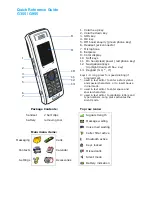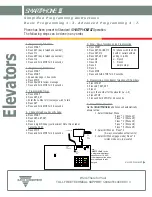
142
Gigaset C530 IP / LUG - USA en / A31008-XXXXX-XXXX-X-XX / Glossary.fm / 25.03.2015
Te
mplat
e
B
o
rn
eo
, V
e
rs
ion 1
, 21.
06
.2
012
Glossary
Codec
Coder/decoder
Codec is a procedure that digitalises and compresses analogue voice before it is sent via the
Internet, and decodes – i.e. translates into analogue voice – digital data when voice packets
are received. There are different codecs that vary, for instance, in the level of compression.
Both participants involved in the telephone connection (caller/sender and recipient) must
use the same codec. This is negotiated between the sender and the recipient when
establishing a connection.
The choice of codec is a compromise between voice quality, transmission speed and the
necessary bandwidth. A high level of compression, for example, means that the bandwidth
required for each voice connection is low. However, it also means that the time needed to
compress/decompress the data is greater, which increases execution time for data in the
network and thus impairs voice quality. The time required increases the delay between the
sender speaking and the recipient hearing what has been said.
COLP / COLR
Connected Line Identification Presentation/Restriction
Feature provided by a VoIP/ISDN connection for outgoing calls.
COLP displays the phone number accepting the call on the calling participant's display unit.
The number of the participant accepting the call is different to the dialled number, e.g. if the
call is diverted or transferred.
The called participant can use COLR (Connected Line Identification Restriction) to prevent
the number from appearing on the calling participant's display.
Consultation call
You are on a call. With a consultation call, you interrupt the conversation briefly to establish
a second connection to another participant. If you end the connection to this participant
immediately, then this was a consultation call. If you switch between the first and second par-
ticipant, it is called
.
CW
Call Waiting
See
.
D
DHCP
Dynamic Host Configuration Protocol
Internet protocol that handles the automatic assignment of
to
. The protocol is made available in the network by a server. A DHCP server can, for
example, be a router.
The phone contains a DHCP client. A router that contains a DHCP server can assign the IP
addresses for the phone automatically from a defined address block. The dynamic
assignment means that several
can share one IP address, although
they can only use it alternately and not simultaneously.
With some routers you can specify that the IP address for the phone is never changed.
Displayed name
VoIP provider feature. You can specify any name that is to be shown to the other participant
during a call instead of your phone number.
















































